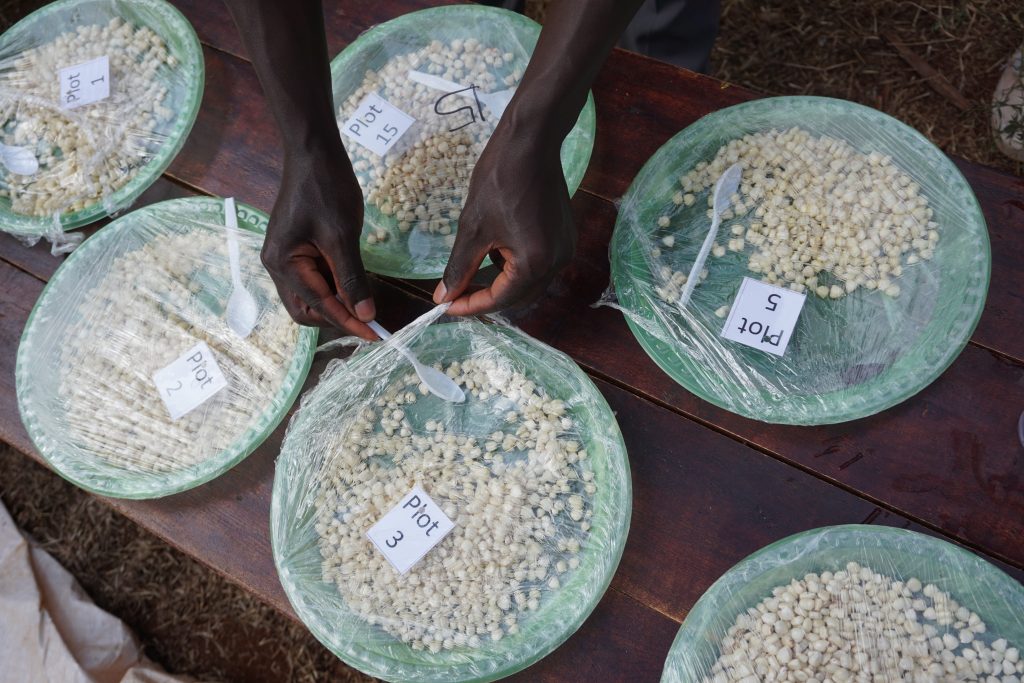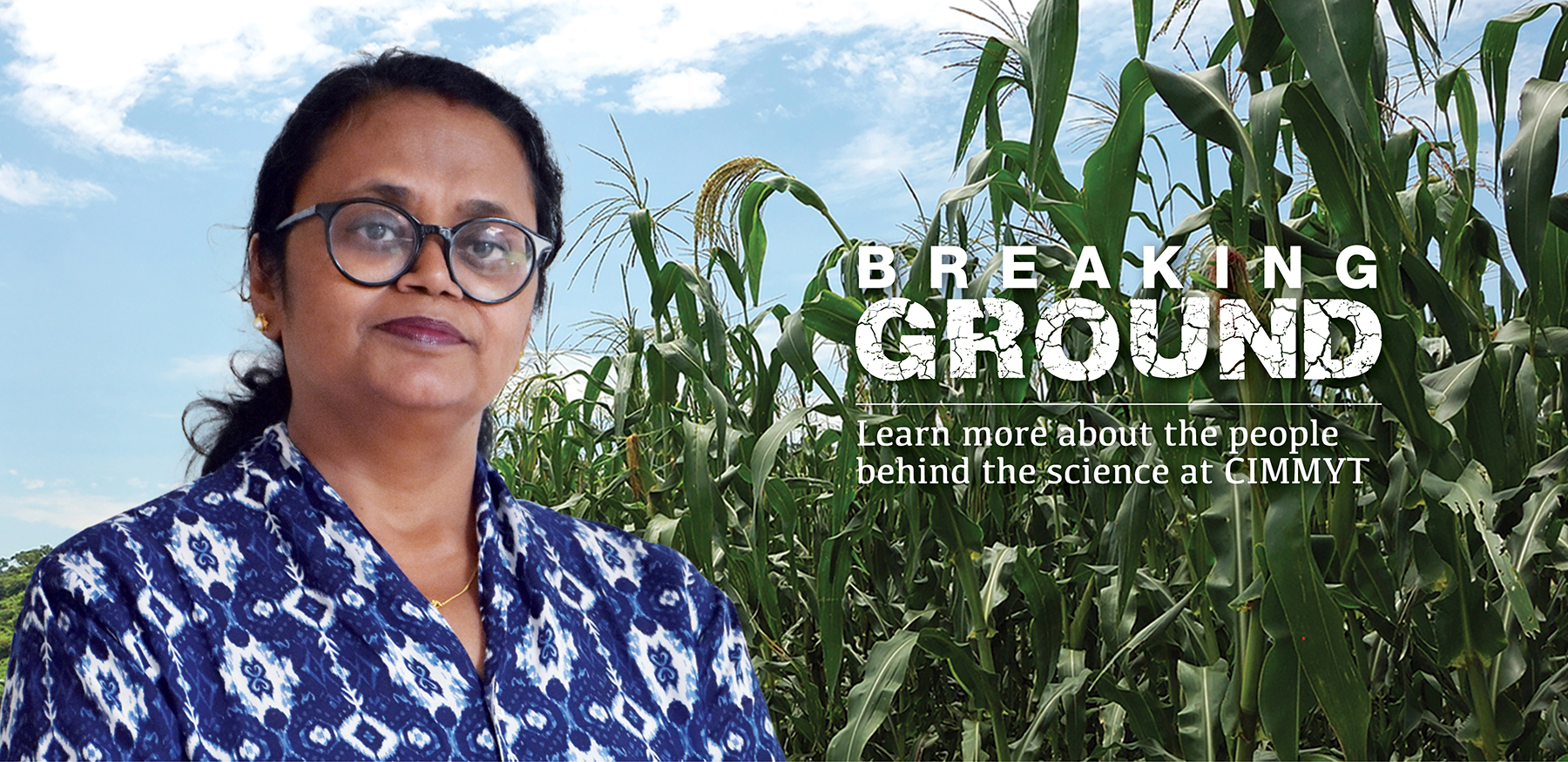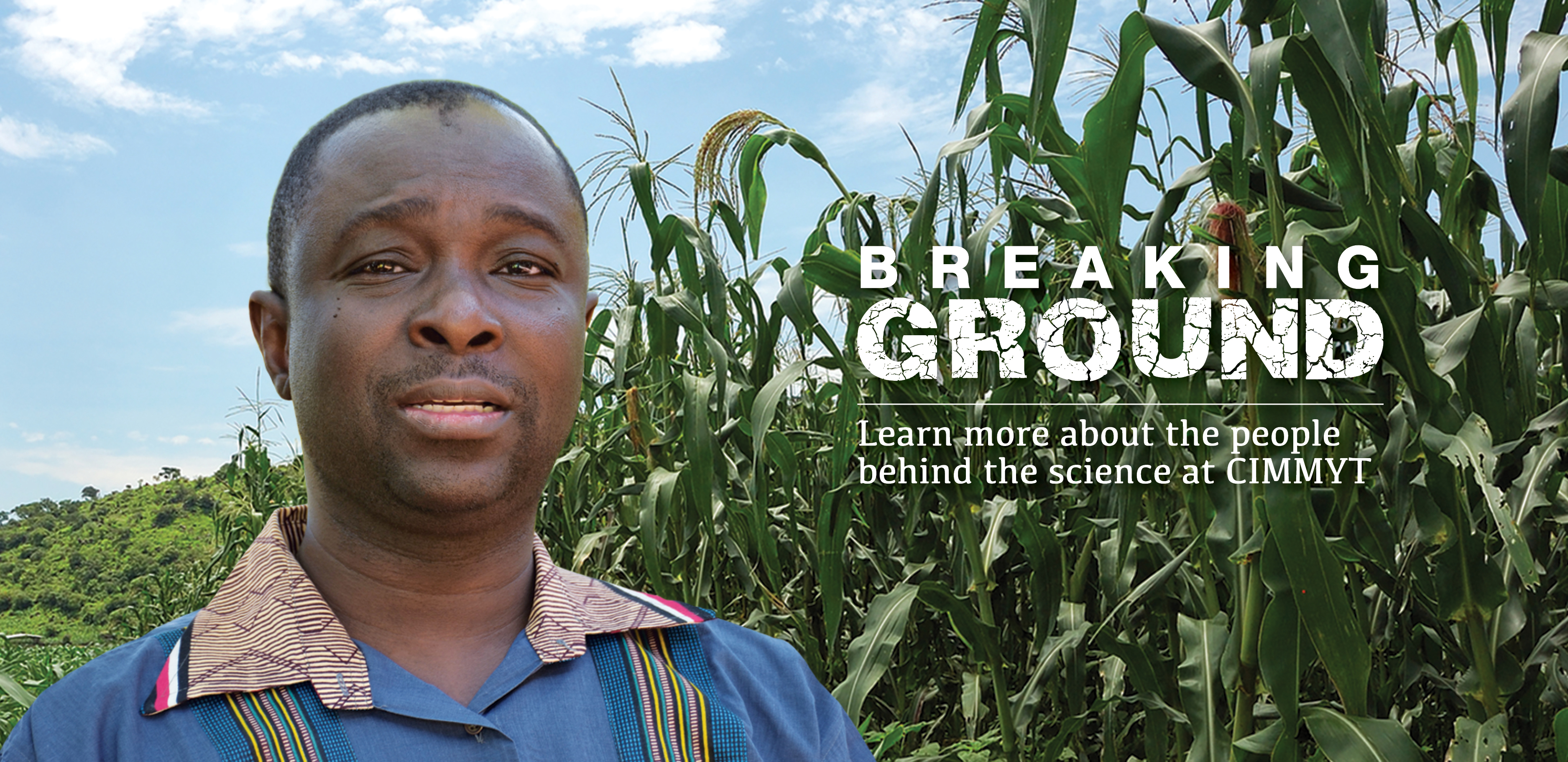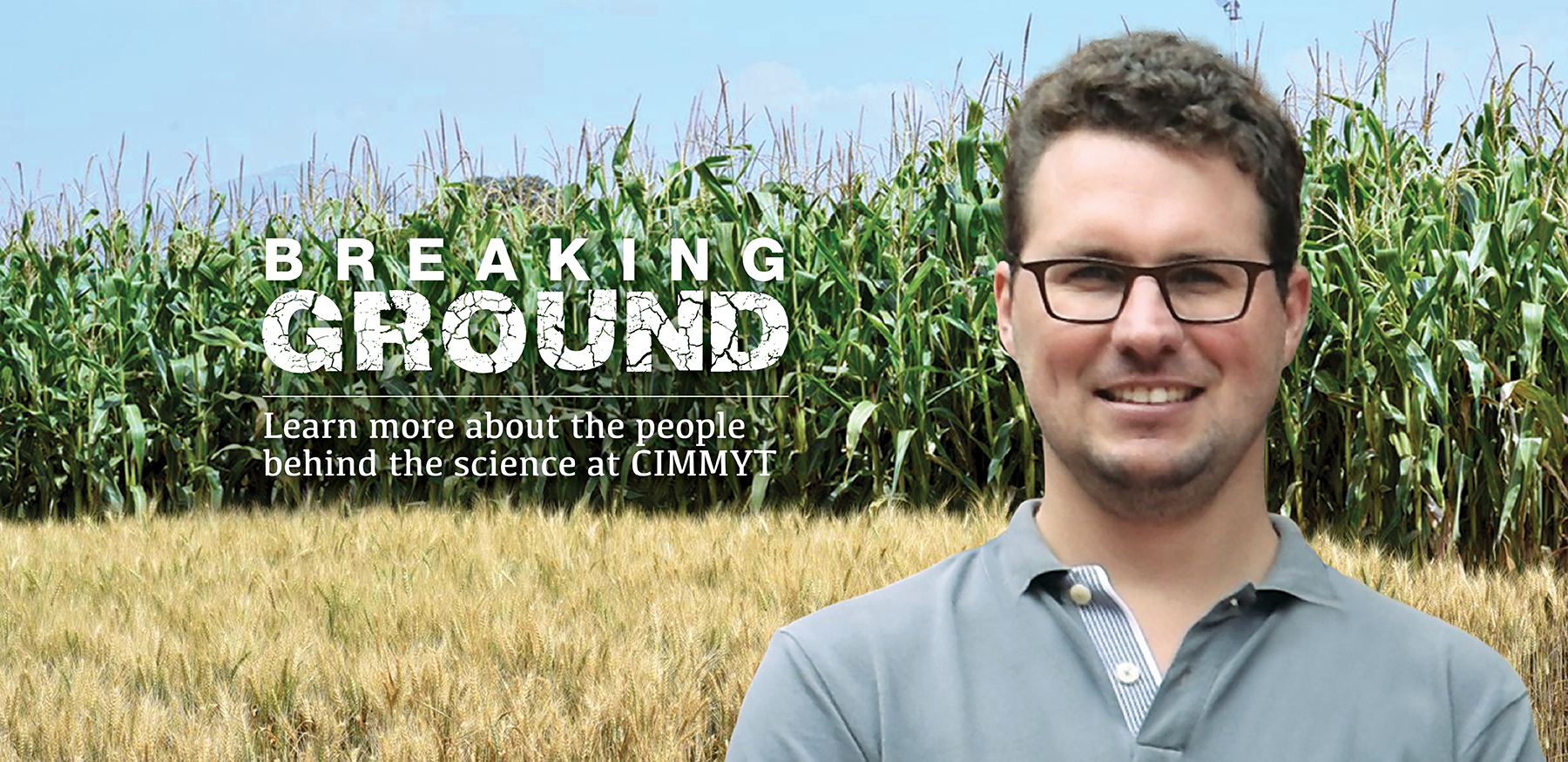Getting a good maize harvest, or just enough to feed the family, has always been a challenge for maize small farmers in developing countries. Faced with variable rainfall, heat waves, insect attacks or diseases, they rarely yield more than two tons of maize per hectare, and sometimes lose their crops altogether. Climate change, invasive pests like fall armyworm or new diseases like maize lethal necrosis could jeopardize even further the livelihoods of maize farmers and trigger severe food crises.
In this scenario, the lives and income of maize farmers rely on good seeds: seeds that are climate-resilient, pest- and disease-resistant, and that grow and yield well under local conditions, often with minimum inputs.
“That is where the maize improvement research at the International Maize and Wheat Improvement Center (CIMMYT) plays a crucial role in this challenge of food security. You need to develop the right location-specific varieties that farmers want, that partner seed companies are willing to produce, in a cost- and time-efficient way,” says Aparna Das. She joined CIMMYT’s Global Maize research program in August 2018 as Technical Program Manager.
“My role is to work with and guide the Breeding and Seed Systems team, so that our research is more client- and product-oriented, efficient, and so that there is a better coordination and monitoring, aligned with the available resources and skills within CIMMYT, and with our numerous public and private partners,” she explains.
Value-for-money farmer impact
An important activity Das coordinated recently is a series of collaborative product profiling workshops with CIMMYT’s partners. Integrating the priorities of the national agricultural research systems and partner seed companies, this exercise reviewed and redefined what maize traits and attributes research should focus on in years to come. After this consultation, partners not only pick up CIMMYT germplasm based on trial data, but they can also verify if it fits with their own profile, to make sure that the traits they want are there. It makes breeding much more targeted and efficient.
“Product profiling has already influenced our research. For instance, all partners mentioned husk cover as a ‘must-have’ trait, because you have less insect attacks and grain spoilage,” Das explains. “Although it was considered a base trait, the breeders did not consider it systematically during their maize line selection and product advancement. Now it is integrated,” she notes.
“Our impact should not be limited to the number of varieties released or the number of papers published, but also how many varieties are picked up by partners, adopted by farmers and scaled up,” Das points out.
Breeders and seed systems specialists have worked together to estimate and track the costs of delivering products. Teams responsible for product profiles can now, through simulation, test different solutions and see what costs could be reduced or adjusted to develop the hybrid.
Das enjoys this type of collaboration. “Managing behavioral change is a key part of my role, being able to work with different teams and cultures, which makes my job so interesting,” she says.

An out-of-the-book thinker in a men’s world
Plant breeding is a male-dominated world but Das is used to fitting in as a minority. Originally from West Bengal, she grew up in Ludhiana, another Indian state and a different culture. She learned genetics and plant breeding at Punjab Agricultural University (PAU) in Ludhiana. Discovering the new field of molecular breeding, at its infancy twenty-five years ago, was an exciting challenge.
At PAU, Das pursued crop improvement research, first in wheat and potato, and later in rice genetics. She received an award from India’s Department of Science and Technology under the Young Scientist Program for her work on jumping genes in basmati rice, aimed at creating shorter and more productive basmati varieties while maintaining the basmati aroma.
Later she joined the International Rice Research Institute (IRRI) to work on the development of Golden Rice, a provitamin A-rich variety, through genetic engineering.
“Being a woman in plant breeding, especially as a breeder, is not that common. Women are not expected to do plant breeding fieldwork, away from the lab and offices. But I did not back off. I did my rice fieldwork in the paddy fields, at 40 degrees, all on my own. I believe that women bring a level of precision that is very important in breeding.”
Bridging public and private sectors
After ten years of public research, she moved to the private seed sector, to learn how seed companies integrate farmers’ needs to their research pipeline, and then channel this research to deliver to millions of farmers. “A big lesson from corporations is the value for money at each stage of their research, and that market research is instrumental to really understand farmers’ needs and guide breeding,” she notes.
After a decade in the private sector, Das was keen to move on and use her experience in the nonprofit sector. Then she joined CIMMYT. “This opportunity of technical program manager was timely. I knew the strengths of CGIAR, having highly educated scientists and the great potential outreach of the research. I knew where crop research could be improved, in converting basic research into demand-driven research.”
“Since my time at IRRI a decade ago, I realized things had moved on in the CGIAR system. Seed systems, product profiling and value chain research are now fully integrated in the Global Maize program. It is a crucial time to be here at CIMMYT. With the CGIAR reform, with the climate emergency, and emerging pests and diseases, we have to be even more inventive and reactive to continue to deliver greater impact,” she concludes.

 Capacity development
Capacity development 
